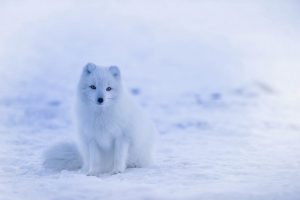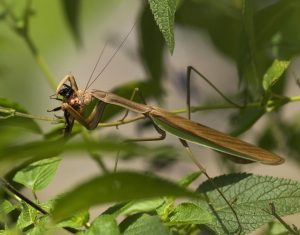Image by Susanne Jutzeler, suju-foto from Pixabay
Camouflage is the use of any combinations of materials or coloration in order to be concealed from the naked eye. Humans use camouflage in order to “hide” when they are hunting and also to be concealed in military operations. Animals use camouflage in order to hide whether they are prey or predator.
Animals utilize four main kinds of camouflage: 1 – concealing coloration (hiding against a background of the same color); 2 – disruptive coloration (animals with spots or stripes that break up their outline so they don’t stick out against the background); 3 – disguise (blending in by looking like another object); and 4 – mimicry (looking like an insect or animal that is dangerous or poisonous).

(1) Image by Kevinsphotos
from Pixabay

(2) Image by Michael Siebert from Pixabay

(3) Image-by-Brett-Hondow-from-Pixabay
A species’ camouflage depends on many different factors. Their physical characteristics are one factor – those with fur rely on camouflage differently than those with feathers and scales. Fur takes time to change colors whereas feathers and scales can be shed or change fairly quickly. The behavior of a species is also a factor. Animals that tend to live in groups, like zebras, rely on camouflage to help them blend in with the crowd. This makes it difficult for a predator to isolate and hunt a single animal. In addition, if a predator is color blind, this will affect how the prey uses camouflage. The prey would not need to be completely camouflaged into its background if the animal hunting it cannot distinguish colors.
Summer versus Winter
Many animals will change their fur color in winter from browns and grays to white. The reason for this is two-fold. One reason is obviously for camouflage, in order to hide. It helps prey animals like hares, jackrabbits, lemmings and ptarmigans to hide and not get eaten, and it helps predators like arctic foxes and weasels to creep up on their prey. The second reason has to do with warmth. White fur lacks a pigment called melanin and, therefore, has more space in its hair shafts. This allows air from the animal’s body heat to stay trapped in the empty spaces, providing insulation from the cold.

Image-by-christels-from-Pixabay

Image by David Mark from Pixabay
Male versus Female
In most species that use camouflage, the techniques remain the same in male or female. However, there are some exceptions to that rule. A new species of praying mantis that was recently discovered in Latin America camouflages in very different ways – the males retain the stick like appearance while the females transform to look like a leaf. Cuttlefish use an unusual technique when mating. They will show male patterns on the half of their body facing the female while transforming the other half of their body to female patterns so show other males they are not a threat.

Image-by-Florent-Horn-from-Pixabay

Image by WikiImages from Pixabay
Our Challenge
Here are a few ways you explore the world of camouflage –
1 – Go on a walk and see if you can find any examples in nature. Take a picture and be sure to tag us on Facebook.
2 – Cut out the shape of a butterfly. Color it to match a background in your home and hide your butterfly. See how long it takes for someone to find it.
3 – Try to dress to match a background. See if you can blend in enough to hide from others.
For more information about camouflage, visit these sites.
https://www.nationalgeographic.org/encyclopedia/camouflage/
https://www.brainpop.com/science/ecologyandbehavior/camouflage/
https://animals.howstuffworks.com/animal-facts/animal-camouflage.htm



